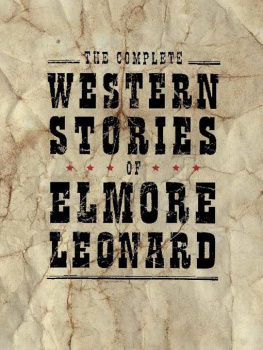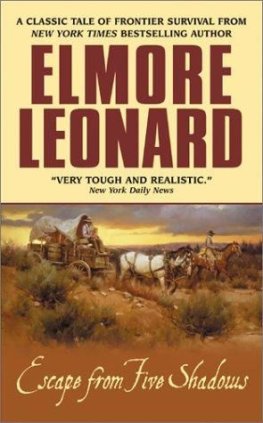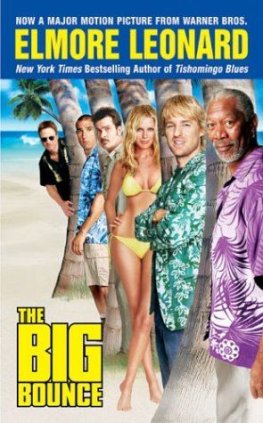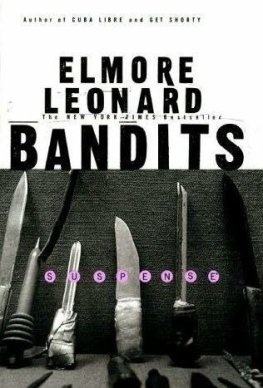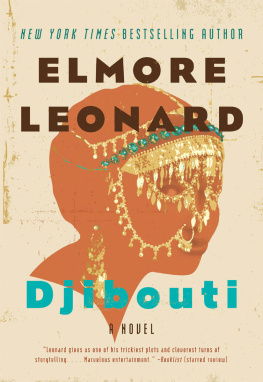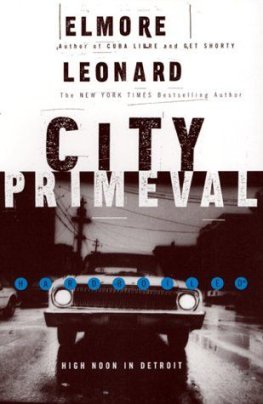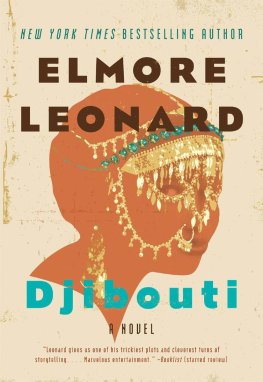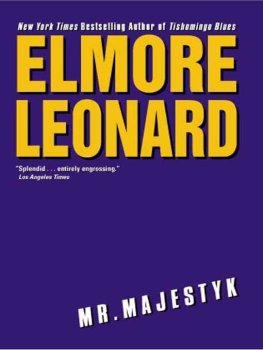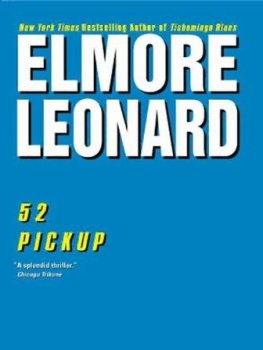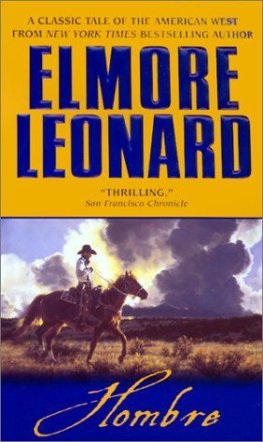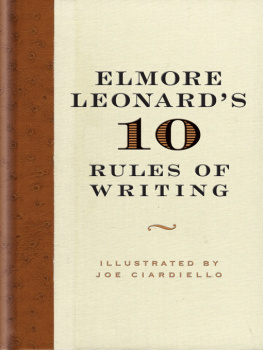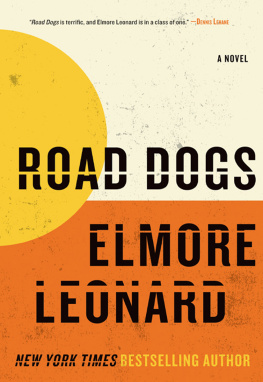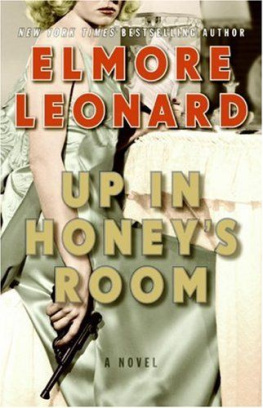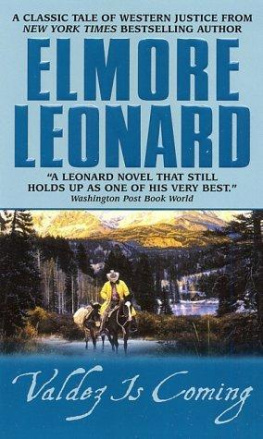Elmore Leonard - The Complete Western Stories of Elmore Leonard
Here you can read online Elmore Leonard - The Complete Western Stories of Elmore Leonard full text of the book (entire story) in english for free. Download pdf and epub, get meaning, cover and reviews about this ebook. year: 2004, publisher: HarperCollins, genre: Detective and thriller. Description of the work, (preface) as well as reviews are available. Best literature library LitArk.com created for fans of good reading and offers a wide selection of genres:
Romance novel
Science fiction
Adventure
Detective
Science
History
Home and family
Prose
Art
Politics
Computer
Non-fiction
Religion
Business
Children
Humor
Choose a favorite category and find really read worthwhile books. Enjoy immersion in the world of imagination, feel the emotions of the characters or learn something new for yourself, make an fascinating discovery.
- Book:The Complete Western Stories of Elmore Leonard
- Author:
- Publisher:HarperCollins
- Genre:
- Year:2004
- Rating:3 / 5
- Favourites:Add to favourites
- Your mark:
- 60
- 1
- 2
- 3
- 4
- 5
The Complete Western Stories of Elmore Leonard: summary, description and annotation
We offer to read an annotation, description, summary or preface (depends on what the author of the book "The Complete Western Stories of Elmore Leonard" wrote himself). If you haven't found the necessary information about the book — write in the comments, we will try to find it.
The Complete Western Stories of Elmore Leonard — read online for free the complete book (whole text) full work
Below is the text of the book, divided by pages. System saving the place of the last page read, allows you to conveniently read the book "The Complete Western Stories of Elmore Leonard" online for free, without having to search again every time where you left off. Put a bookmark, and you can go to the page where you finished reading at any time.
Font size:
Interval:
Bookmark:

WITH ELMORE LEONARD
E LMORE J OHN L EONARD , Jr., started his life of writing in the fifth grade, when as a student at Blessed Sacrament Grade School in Detroit, he was inspired by a Detroit Times serialization of All Quiet on the Western Front, wrote a play, and staged it at school, the classroom desks serving as no mans land. He did not write again until his college years at the University of Detroit, where he majored in English. He wrote a few experimental short stories while spending most of his free time reading and going to the movies. I was discovering who I liked to read, he said. I wasnt reading for story, I was reading for style.
Sometime shortly after college Elmore decided he wanted to be a writer. I looked for a genre where I could learn how to write and be selling at the same time, he recalls. I chose Westerns because I liked Western movies. From the time I was a kid I liked them. Movies like The Plainsman with Gary Cooper in 1936 up through My Darling Clementine and Red River in the late forties.
There was a surge of interest in Western stories in the early fifties, Elmore notes, from Saturday Evening Post and Colliers down through Argosy , Adventure , Blue Book, and probably at least a dozen pulp magazines, the better ones like Dime Western and Zane Grey Magazine paying two cents a word.
His first attempt at writing a Western was not a success. I wrote about a gunsmith that made a certain kind of gun. I have no idea now what the story was about when I sent it to a pulp magazine and it was rejected. I decided Id better do some research. I read On the Border with Crook , The Truth about Geronimo , The Look of the West, and Western Words , and I subscribed to Arizona Highways. It had stories about gunsI insisted on authentic guns in my storiesstagecoach lines, specific looks at different little facets of the West, plus all the four-color shots that I could use for my descriptions, things I could put in and sound like I knew what I was talking about.
He distilled all this valuable detail into a ledger book, which became a constant reference for his story writing throughout the decade.
Properly armed with a sense of the West, he wrote his first Western, Tizwin , the Apache name for corn beer. It didnt sell immediately. The editor at Argosy passed it on to one of their pulp magazines at Popular Publications, Elmore remembers, and they bought it. And changed the title to Red Hell Hits Canyon Diablo. The Argosy editor said, If you have anything else about this period, wed like to read it. So I sat down and wrote Trail of the Apache, which was the first one that was published.
A growing family and a full-time job as a copywriter on the Chevrolet account at Campbell-Ewald Advertising in Detroit did not give Elmore a lot of time to write.
I realized that I was going to have to get up at five in the morning if I wanted to write fiction. It took a while, the alarm would go off and Id roll over. Finally I started to get up and go into the living room and sit at the coffee table with a yellow pad and try to write two pages. I made a rule that I had to get something down on paper before I could put the water on for the coffee. Know where youre going and then put the water on . That seemed to work because I did it for most of the fifties.
Hed also get a little writing done at the agency. Id put my arm in the drawer and have the tablet in there and Id just start writing and if somebody came in Id stop writing and close the drawer.
Elmore began to focus on a particular area of the West for his stories. I liked Arizona and New Mexico, he said. I didnt care that much for the High Plains Indians, I liked the Apaches because of their reputation as raiders and the way they dressed, with a headband and high moccasins up to their knees. I also liked their involvement with things Mexican and their use of Spanish names and words.
The Complete Western Stories begins with Elmores first five shorts: Apache and cavalry stories set in Arizona in the 1870s and 80s.
I was disappointed by rejections from the better-paying magazines, The Saturday Evening Post and Colliers , Elmore says. They felt my stories were too relentless and lacked lighter moments or comic relief. But I continued to write what pleased me while trying to improve my style.
The next direction for Elmores writing was obvious: write a Western novel. The result was The Bounty Hunters (1953), the prototype for many an Elmore Leonard Western. Take the most dangerous Apache, the wisest scout, and the greediest outlaw, put them all together in the desert sun, and see who wins.
As he spun out novels and short stories from five to seven in the morning, Hollywood came calling and bought a Dime Western story, Three-Ten to Yuma, and from Argosy , The Captives, filmed as The Tall T . Elmore was excited but in both cases saw how easily Hollywood could screw up a simple story. Both films, released in 1957, are now regarded as minor classics.
Elmore reached his goal as a Western writer in April of 1956, when The Saturday Evening Post published his story Moment of Vengeance.
In less than five years he had entered the pantheon of Western writers. But the Western was on its way out. Television killed the Western, Elmore says. The pulps were mostly gone by then too, the market was drying up.
In 1960, Elmore took his profit sharing from Campbell-Ewald$11,500with the intention of becoming a full-time writer. He had put his ten years in. The money would have lasted six months, and in that time I could write a book and sell it. Instead, the family bought a house and he wrote freelance advertising copy and educational films to pay the bills until the movie version of his novel Hombre was bought by a studio in 1966, and he finally had the money to write his first non-Western novel, The Big Bounce .
But he wasnt through with the Westerns by any means. He had yet to write what many consider to be his masterpiece.
Just before his five-year fiction-writing hiatus, in 1961, he wrote a story for Roundup, a Western Writers of America anthology, called Only Good Ones, the story of Bob Valdez, soon to be the classic Elmore Leonard hero who is misjudged by the antagonist, the bad guys realizing too late theyll be lucky to get out of this alive.
Six years later, in search of an idea for a novel he could sell to the movies, Elmore picked up Only Good Ones and, in seven weeks, expanded it into Valdez Is Coming (1970) which was brought to the big screen with Burt Lancaster three years later.
Look what I got away with, Elmore says. In the final scene of Valdez there is no shootout, not even in the film version. Writing this one I found that I could loosen up, concentrate on bringing the characters to life with recognizable traits, and ignore some of the conventions found in most Western stories.
The Complete Western Stories of Elmore Leonard charts the evolution of Elmores style and particular sound from the very beginning of his writing career. In five years, between 1951 and 1956, he wrote twenty-seven of the thirty stories in this volume. He carved out his turf in the Arizona and New Mexico Territories, from Bisbee to Contention, from Yuma Territorial Prison to the Jicarilla Apache Subagency in Puerco, creating dozens of memorable characters: good, bad, and really bad. (Those are the ones we like the most.)
Elmore Leonard wrote a total of eight Western novels before, during, and after his Complete Western Stories ; he even wrote a few Western stories contained herein, after he began writing contemporary crime novels (The Tonto Woman and Hurrah for Captain Early! ).
Over time, the suffocating heat and alkali dust of the Arizona desert gave way to the mean streets of Detroit and the subtropical weirdness of South Florida. But Elmore will be the first to tell you, theyre all derived from what he learned writing these Western stories; he just changed the setting and the century.
Font size:
Interval:
Bookmark:
Similar books «The Complete Western Stories of Elmore Leonard»
Look at similar books to The Complete Western Stories of Elmore Leonard. We have selected literature similar in name and meaning in the hope of providing readers with more options to find new, interesting, not yet read works.
Discussion, reviews of the book The Complete Western Stories of Elmore Leonard and just readers' own opinions. Leave your comments, write what you think about the work, its meaning or the main characters. Specify what exactly you liked and what you didn't like, and why you think so.

